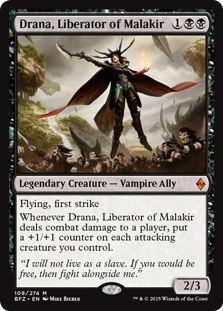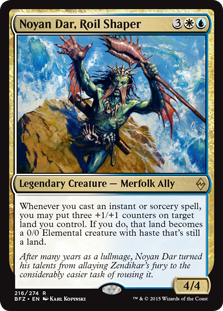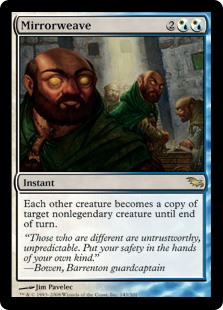Welcome back to Magic Gatherings!
Oath of the Gatewatch has been out for a week now, and I hope you’ve all had a chance to draft it. Unfortunately, I haven’t—I’ll get my first crack at the cards tonight at Friday Night Magic—but apparently last week’s article on draft archetypes for Oath has been hopping. Check it out if you haven’t had a chance yet! And if you have, let me know how your experience squares with my predictions.
This week is a bit of a limbo week, Magic-wise; last weekend Oath released, next weekend is Pro Tour Oath of the Gatewatch, and in the meantime people are having fun testing out the new cards. I’m taking advantage of the lull to write about a project I’ve had in the works for a bit: designing Commander decks around the legendary creatures from Battle for Zendikar block. This week I’ll tackle legends from Battle for Zendikar. For the next installment in the series (two weeks from now) we’ll be on to the new hotness from Oath of the Gatewatch.
Drana, Liberator of Malakir
First up is a much-hyped Legend who hasn’t found her place in Standard yet, [mtg_card]Drana, Liberator of Malakir[/mtg_card].
Drana is a very interesting card to build around, because the things she asks you to do—play lots of creatures, attack a lot, care about +1/+1 counters—are not things that black Commander decks often try. Drana’s prior incarnation, [mtg_card]Drana, Kalastria Bloodchief[/mtg_card], was more of a typical mono-black commander. Make tons of mana and kill stuff? Black’s all about that. Go wide and beat down? Not so much. But unusual commanders lead to fun and surprising decks, so I say we let Drana liberate us from our tired ways of thinking. (I’ll be here all week.)
The most important thing to note is that creatures need to attack to get bonus counters from Drana. That will guide a lot of deckbuilding decisions. One timing issue upfront: Drana’s ability triggers when she deals damage, in the first strike damage step, so your creatures will be a bit bigger when they get around to dealing their own damage. Drana can also trigger twice, if you equip her with a card like [mtg_card]Fireshrieker[/mtg_card]—once for each time she deals damage.
But if our other creatures also need to attack to get the Drana bonus, we’ll want creatures that are good at attacking. Specifically, we’ll want creatures that have natural evasion, so they don’t get blocked down by opposing creatures—putting a +1/+1 counter on a creature isn’t very exciting if that creature is about to die. Fear, flying, intimidate, and menace are all great ideas. No one ability will make your creatures always unblockable, but in a large game you should have enough choice in whom you attack that you can slip your creatures through (i.e., one opponent has no flyers; the next has dragons, but no black creatures). You can also help out a bit with a combo like [mtg_card]Filth[/mtg_card] + [mtg_card]Urborg, Tomb of Yawgmoth[/mtg_card].
Creatures that naturally want to attack are also great choices—say, creatures that have abilities which trigger when they deal combat damage to opponents. A creature like [mtg_card]Raving Dead[/mtg_card], for example, can really help your aggressive gameplan by making sure your opponents’ life totals stay manageable. Or, you could try [mtg_card]Grave Titan[/mtg_card], and just get the trigger when your creature attacks. Making extra zombies—each of which can get their own counters from Drana—is a nice bonus.

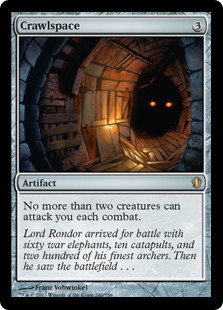
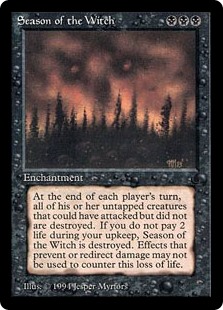 Naturally, if your creatures are always attacking, they’re not going to be available to block. (Black’s not known for fielding great vigilance creatures.) So you’ll want an insurance plan to make sure your opponents don’t gang up, since collectively they can deal more damage than you can on your own. A card like [mtg_card]No Mercy[/mtg_card] or its cousin [mtg_card]Dread[/mtg_card] makes you a pretty unattractive target; [mtg_card]Crawlspace[/mtg_card] or [mtg_card]Koskun Falls[/mtg_card] might keep your opponents from attacking you entirely. Meanwhile, [mtg_card]Season of the Witch[/mtg_card] forces your opponents to play by your gameplan—namely, attacking every turn. This helps your creatures get through, and also opens up the chance that your opponents might help you out: if they have to attack, but they can’t attack you, they’ll have to go for each other. Each point your opponents inflict on each other is one less you have to deal yourself.
Naturally, if your creatures are always attacking, they’re not going to be available to block. (Black’s not known for fielding great vigilance creatures.) So you’ll want an insurance plan to make sure your opponents don’t gang up, since collectively they can deal more damage than you can on your own. A card like [mtg_card]No Mercy[/mtg_card] or its cousin [mtg_card]Dread[/mtg_card] makes you a pretty unattractive target; [mtg_card]Crawlspace[/mtg_card] or [mtg_card]Koskun Falls[/mtg_card] might keep your opponents from attacking you entirely. Meanwhile, [mtg_card]Season of the Witch[/mtg_card] forces your opponents to play by your gameplan—namely, attacking every turn. This helps your creatures get through, and also opens up the chance that your opponents might help you out: if they have to attack, but they can’t attack you, they’ll have to go for each other. Each point your opponents inflict on each other is one less you have to deal yourself.
Since Drana is going to be passing out tons of +1/+1 counters to your creatures, it makes sense to look for ways to make those +1/+1 counters matter. As I mentioned above, this isn’t something black has historically cared about very much; there are a few cards, like [mtg_card]Oona’s Blackguard[/mtg_card], [mtg_card]Mer-Ek Nightblade[/mtg_card]), or [mtg_card]Retribution of the Ancients[/mtg_card], but it’s a short list. That means we need to get creative.
One obvious answer is that the +1/+1 counters will naturally increase the power of your creatures. If an ability cares about how much damage your creature deals, steadily increasing the creature’s power will also increase the power of that ability. Take lifelink, for example: more power means more damage, and more damage means more life. A creature like [mtg_card]Needle Specter[/mtg_card] will force whomever it hits to discard more and more cards. At the top of the curve, there’s [mtg_card]Necropolis Regent[/mtg_card], a little-loved mythic from Return to Ravnica, who essentially turbocharges Drana’s natural ability.
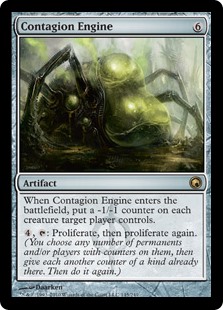
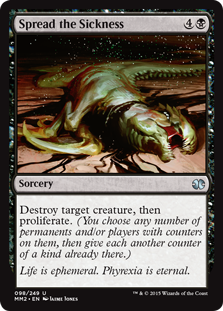 There’s also the proliferate ability, as seen on cards like [mtg_card]Spread the Sickness[/mtg_card] or [mtg_card]Contagion Engine[/mtg_card]. Essentially, proliferate says, “Look at everything in play. Does it have counters? If it does, you can give it an extra one, of whatever kind(s) it already had.” So, once Drana gives +1/+1 counters to your creatures, you can add an extra +1/+1 counter to each creature, each time you proliferate. It also works on your opponent’s creatures, if you want. And while you wouldn’t want to give out extra +1/+1 counters to your enemies’ troops, if you can get -1/-1 counters on them—say, with a creature that has wither—you can also proliferate those, to make your opponents’ creatures progressively weaker.
There’s also the proliferate ability, as seen on cards like [mtg_card]Spread the Sickness[/mtg_card] or [mtg_card]Contagion Engine[/mtg_card]. Essentially, proliferate says, “Look at everything in play. Does it have counters? If it does, you can give it an extra one, of whatever kind(s) it already had.” So, once Drana gives +1/+1 counters to your creatures, you can add an extra +1/+1 counter to each creature, each time you proliferate. It also works on your opponent’s creatures, if you want. And while you wouldn’t want to give out extra +1/+1 counters to your enemies’ troops, if you can get -1/-1 counters on them—say, with a creature that has wither—you can also proliferate those, to make your opponents’ creatures progressively weaker.
On the topic of proliferate: I’d be remiss here if I didn’t mention infect, a  mechanic which fits well in an aggressive deck that increases the power of its creatures. If you weren’t playing in Scars of Mirrodin block, creatures with infect deal damage to players in the form of poison counters, and a player with ten or more poison counters loses the game. (If you were playing during Scars block, pour one out for the Mirrans. We will endure.) Basically, infect creatures only have to deal ten damage—total—to each opponent to eliminate them, which is much easier than dealing 40+ damage to each opponent. 10 poison is the official rule, anyway; some playgroups may choose to houserule poison differently. I’ve heard of 15 or 20, but I’ve also heard that while infect decks are great at killing one opponent really quickly, they attract enough ire that the rest of the table keeps them in check. You know your group better than I do.
mechanic which fits well in an aggressive deck that increases the power of its creatures. If you weren’t playing in Scars of Mirrodin block, creatures with infect deal damage to players in the form of poison counters, and a player with ten or more poison counters loses the game. (If you were playing during Scars block, pour one out for the Mirrans. We will endure.) Basically, infect creatures only have to deal ten damage—total—to each opponent to eliminate them, which is much easier than dealing 40+ damage to each opponent. 10 poison is the official rule, anyway; some playgroups may choose to houserule poison differently. I’ve heard of 15 or 20, but I’ve also heard that while infect decks are great at killing one opponent really quickly, they attract enough ire that the rest of the table keeps them in check. You know your group better than I do.
Infect has never really been my jam, but I can’t deny that it’s a great fit for Drana and synergizes well with the cards Drana wants you to play anyway. If you’re interested in trying it out, Google up a few [mtg_card]Skithiryx, the Blight Dragon[/mtg_card] Commander lists for inspiration, or check out this post from Commander Theory.
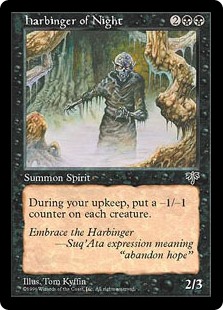 Asides aside, there are lots of other things we can do with +1/+1 counters and proliferate. One neat interaction is that when a creature has both +1/+1 and -1/-1 counters on it at the same time, they annihilate each other, one for one, like matter and antimatter. So, let’s say you have a [mtg_card]Harbinger of Night[/mtg_card] (a card, by the way, that twelve-year-old Harry thought was just the coolest). Every upkeep, the Harbinger will put a -1/-1 counter on each creature in play. This includes your creatures—except that if Drana has given them +1/+1 counters, the -1/-1 counters the Harbinger drops won’t stick around: they’ll just bamf away a +1/+1 counter, and your creatures will go on about their merry way. The reverse works too; if your creatures get a lot of -1/-1 counters at once (say, if you cast [mtg_card]Black Sun’s Zenith[/mtg_card]), Drana can start building them back up to full strength. Of course, there’s no need to be fair about all this, either. Try [mtg_card]Midnight Banshee[/mtg_card], who reads like the Harbinger—except that, whoops, all your creature just happen to be black. And remember, as your opponents’ creatures are racking up the -1/-1 counters, you can be proliferating to speed up their impending demise. Finally, if your creatures have the persist ability,if they come back when they die, unless they have -1/-1 counters on them. Drana gives you a way to continually annihilate those counters, so your [mtg_card]Puppeteer Clique [/mtg_card]can come back again and again.
Asides aside, there are lots of other things we can do with +1/+1 counters and proliferate. One neat interaction is that when a creature has both +1/+1 and -1/-1 counters on it at the same time, they annihilate each other, one for one, like matter and antimatter. So, let’s say you have a [mtg_card]Harbinger of Night[/mtg_card] (a card, by the way, that twelve-year-old Harry thought was just the coolest). Every upkeep, the Harbinger will put a -1/-1 counter on each creature in play. This includes your creatures—except that if Drana has given them +1/+1 counters, the -1/-1 counters the Harbinger drops won’t stick around: they’ll just bamf away a +1/+1 counter, and your creatures will go on about their merry way. The reverse works too; if your creatures get a lot of -1/-1 counters at once (say, if you cast [mtg_card]Black Sun’s Zenith[/mtg_card]), Drana can start building them back up to full strength. Of course, there’s no need to be fair about all this, either. Try [mtg_card]Midnight Banshee[/mtg_card], who reads like the Harbinger—except that, whoops, all your creature just happen to be black. And remember, as your opponents’ creatures are racking up the -1/-1 counters, you can be proliferating to speed up their impending demise. Finally, if your creatures have the persist ability,if they come back when they die, unless they have -1/-1 counters on them. Drana gives you a way to continually annihilate those counters, so your [mtg_card]Puppeteer Clique [/mtg_card]can come back again and again.
Roll it all together, and you have an unusual, aggressive black deck, which can also reasonably go long with its +1/+1 and -1/-1 counter manipulation:
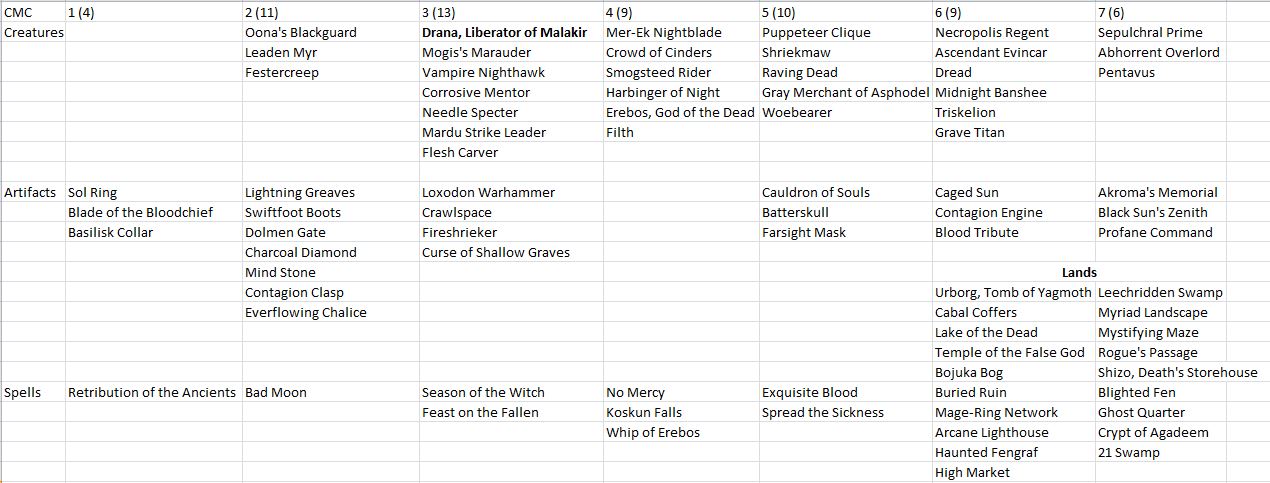
And here’s the list on TappedOut, with card images and suchlike. Sorry if the formatting here seems wonky—I find this is the easiest way to display Commander decklists in an understandable fashion.
Noyan Dar, Roil Shaper
Next we have Noyan Dar, Roil Shaper, an awaken lord of sorts. Each time you cast an instant or sorcery, Noyan dumps a bucket of cold water on one of your lands, which jumps out of bed like a Looney Tunes character and charges after your opponents. Consequently, Noyan rewards lots of spells, plus things that interact with lands. This sounds hopelessly obvious, of course. But it turns out that having all your creatures also be lands opens up some curious loopholes.
Usually, when Magic wants to affect all permanents, designers exempt lands on purpose. Early (and not-so-early) cards like [mtg_card]Stasis[/mtg_card], [mtg_card]Obliterate[/mtg_card], and [mtg_card]Upheaval[/mtg_card] have shown that destroying or removing lands en masse along with other permanents is pretty poor gameplay: players tend to get frustrated when they can’t play spells. However, when you have a bunch of lands that are also creatures, you gain access to some spectacularly lopsided effects—destroying or bouncing all permanents except for your lands, which are also creatures, will leave you with a clear board to attack on.
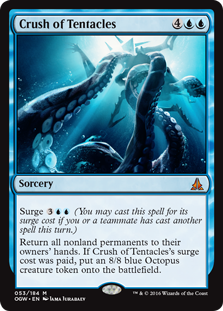
New Oath of the Gatewatch mythic [mtg_card]Crush of Tentacles[/mtg_card] is a fine example of what I’m getting at. It returns all nonland permanents to their owners’ hands, which means that your Noyan-animated land creatures get to hang around and attack unimpeded. Conveniently, Crush is a sorcery, so Noyan will give you a 3/3 to work with when you cast it. Any other lands you’ve animated are clear to attack, as well. Oh, and if you cast [mtg_card]Crush of Tentacles[/mtg_card] for its surge cost, you get an 8/8 Octopus for your troubles. Have fun attacking while your opponents try to rebuild!
Of course, this cuts both ways: spells that affect creatures can also affect your lands. This means [mtg_card]Day of Judgment[/mtg_card], [mtg_card]Evacuation[/mtg_card], et al. can seriously set you back: if Noyan has animated a lot of lands, they’ll all die to mass creature removal spells. For this reason, you’ll want to pack a little protection:
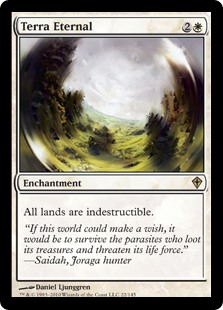
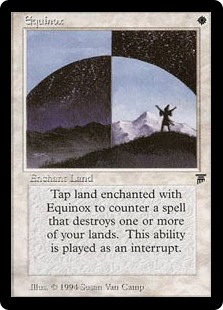
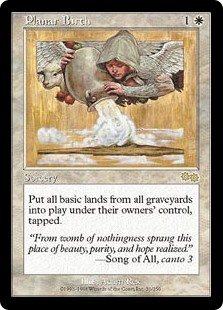 These are good countermeasures, but they aren’t guarantees; some of your lands will probably die as collateral damage. You can help keep pace with cards like [mtg_card]Land Tax[/mtg_card] and [mtg_card]Oath of Lieges[/mtg_card], which will continue to pull lands out of your library. Generally speaking, I recommend not going too wide with your lands—animate enough so that you’re not ruined by a single removal spell but few enough that you can cast spells if something were to happen to your animated lands. (When you trigger Noyan, you can target a land that’s already a creature, if you don’t want to overexpose yourself—the land just gets three more +1/+1 counters, so you can build a single big threat.)
These are good countermeasures, but they aren’t guarantees; some of your lands will probably die as collateral damage. You can help keep pace with cards like [mtg_card]Land Tax[/mtg_card] and [mtg_card]Oath of Lieges[/mtg_card], which will continue to pull lands out of your library. Generally speaking, I recommend not going too wide with your lands—animate enough so that you’re not ruined by a single removal spell but few enough that you can cast spells if something were to happen to your animated lands. (When you trigger Noyan, you can target a land that’s already a creature, if you don’t want to overexpose yourself—the land just gets three more +1/+1 counters, so you can build a single big threat.)
It’s also interesting that lands Noyan animates are technically 0/0 creatures—they have power and toughness because of the +1/+1 counters on them. That means that, like Drana, your land creatures benefit from proliferate, which will make them permanently bigger by giving them extra +1/+1 counters. (It also means [mtg_card]Thief of Blood[/mtg_card] will ruin your day; you might want to pack a few anthem effects if you are scared of seeing that card in your playgroup.) But since your land creatures are fundamentally 0/0, you also get some quirky interactions:
Target your awakened Plains with this, and everything in play becomes a copy of a 0/0 land creature, which should kill most stuff. Similarly, effects that set power and toughness to specific values will buff your lands, since their +1/+1 counters will stack on top of whatever other effects have set them to. I didn’t go this route, but [mtg_card]Mirror Entity[/mtg_card] could be fun to try.
Another interesting feature is that Noyan will keep your battlefield stocked with creatures, even though your deck is stuffed with spells. Why would something like that matter?
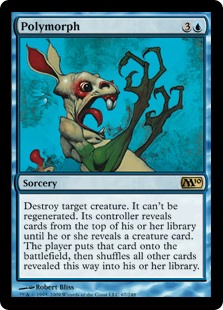
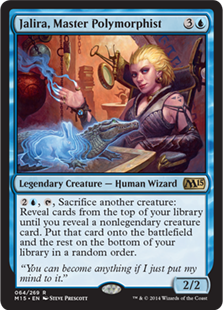
 Polymorph and its ilk turn creatures you control into other random creatures from your library. In any normal deck, it’s not an especially reliable spell, since you never know what you’re going to hit. But Noyan can offer up a creature-land to polymorph, which means you can include only the creature cards that are spectacularly awesome when you hit them.
Polymorph and its ilk turn creatures you control into other random creatures from your library. In any normal deck, it’s not an especially reliable spell, since you never know what you’re going to hit. But Noyan can offer up a creature-land to polymorph, which means you can include only the creature cards that are spectacularly awesome when you hit them.

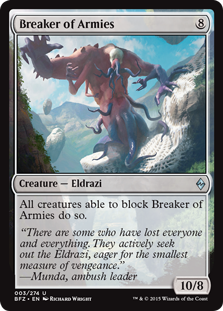
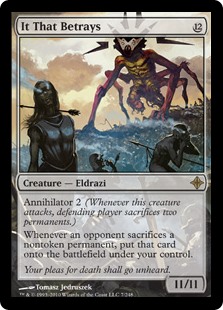 Really, these can be any big creatures you like, but I particularly love the flavor here: Noyan awakens Zendikar’s lands, only to have giant Eldrazi pop out of them. Noyan Dar, Traitor to Zendikar? Maybe so, maybe so… I left off the big titans Ulamog and Kozilek for budget reasons, but if you have ’em, run ’em ([mtg_card]Emrakul, the Aeons Torn[/mtg_card] is banned in Commander). I recommend keeping [mtg_card]It That Betrays[/mtg_card], though. Too perfect.
Really, these can be any big creatures you like, but I particularly love the flavor here: Noyan awakens Zendikar’s lands, only to have giant Eldrazi pop out of them. Noyan Dar, Traitor to Zendikar? Maybe so, maybe so… I left off the big titans Ulamog and Kozilek for budget reasons, but if you have ’em, run ’em ([mtg_card]Emrakul, the Aeons Torn[/mtg_card] is banned in Commander). I recommend keeping [mtg_card]It That Betrays[/mtg_card], though. Too perfect.
The rest of the deck is mostly spells to fuel Noyan. Like your big polymorph targets, these are quite customizable, but I’ve biased toward a couple categories. First, most spells with awaken make the deck. They’re not only on-theme, but they’re good ways to make more creature lands or to buff the lands you’ve already woken up (remember, you can target lands that are already creatures to give them extra counters). Second, spells that you can cast multiple times are extra-good, since they give you extra triggers.
Third are card-drawing spells. Every blue mage (every player, for that matter) loves a good card-drawing spell, but Noyan is even more interested than most. Extra cards help you find extra instants and sorceries, which animate more lands. This helps you keep pace on board with your opponents, building up lands or animating new ones as necessary. With this deck, if you run out of spells to cast, you can find yourself defenseless pretty quickly. Finding extra lands is fine, too, since you expect some to die; just making your land drop every turn can be a big help.

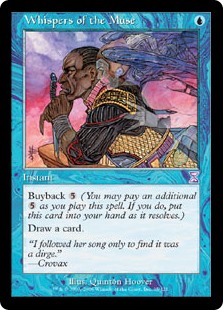
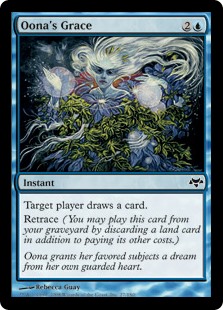 Similarly, spells that can be cast multiple times are particularly nifty. Abilities like flashback are a subtle way of allowing a spell to draw you an extra card without actually saying so. For example, when you cast [mtg_card]Think Twice[/mtg_card], you effectively draw a card that says “2U: Draw a card”—it’s just that the spell sits in your graveyard, not your hand. Buyback (on [mtg_card]Whispers of the Muse[/mtg_card]), rebound (on [mtg_card]Recurring Insight[/mtg_card] and [mtg_card]Cast Through Time[/mtg_card]) and retrace (on [mtg_card]Oona’s Grace[/mtg_card]) work similarly. The trick is that each of these mechanics lets you cast the spell, and each casting triggers Noyan. I used a bit of a light hand here, since too much repetition can lead to stale games, but feel free to adjust (maybe adding [mtg_card]Capsize[/mtg_card] or [mtg_card]Forbid[/mtg_card]) if your group prefers a higher power level.
Similarly, spells that can be cast multiple times are particularly nifty. Abilities like flashback are a subtle way of allowing a spell to draw you an extra card without actually saying so. For example, when you cast [mtg_card]Think Twice[/mtg_card], you effectively draw a card that says “2U: Draw a card”—it’s just that the spell sits in your graveyard, not your hand. Buyback (on [mtg_card]Whispers of the Muse[/mtg_card]), rebound (on [mtg_card]Recurring Insight[/mtg_card] and [mtg_card]Cast Through Time[/mtg_card]) and retrace (on [mtg_card]Oona’s Grace[/mtg_card]) work similarly. The trick is that each of these mechanics lets you cast the spell, and each casting triggers Noyan. I used a bit of a light hand here, since too much repetition can lead to stale games, but feel free to adjust (maybe adding [mtg_card]Capsize[/mtg_card] or [mtg_card]Forbid[/mtg_card]) if your group prefers a higher power level.
The last area of focus is instant spells. Instants are particularly nice for triggering Noyan, since they can give you a surprise blocker or make a creature bigger without warning. In this deck, with its heavy emphasis on sweeping nonland permanents, it’s especially good to trigger Noyan with an instant on an opponent’s end step, untap, and slam a spell like Planar Cleansing. Plus, using instants on your opponents’ turns will help you keep your creature-lands untapped, even when you need a lot of mana to cast a big spell.
I rounded the deck out with a few nice utility cards, tending away from permanents that could get busted up by our own sweepers. It’s a deck that should offer a distinctly different play experience:
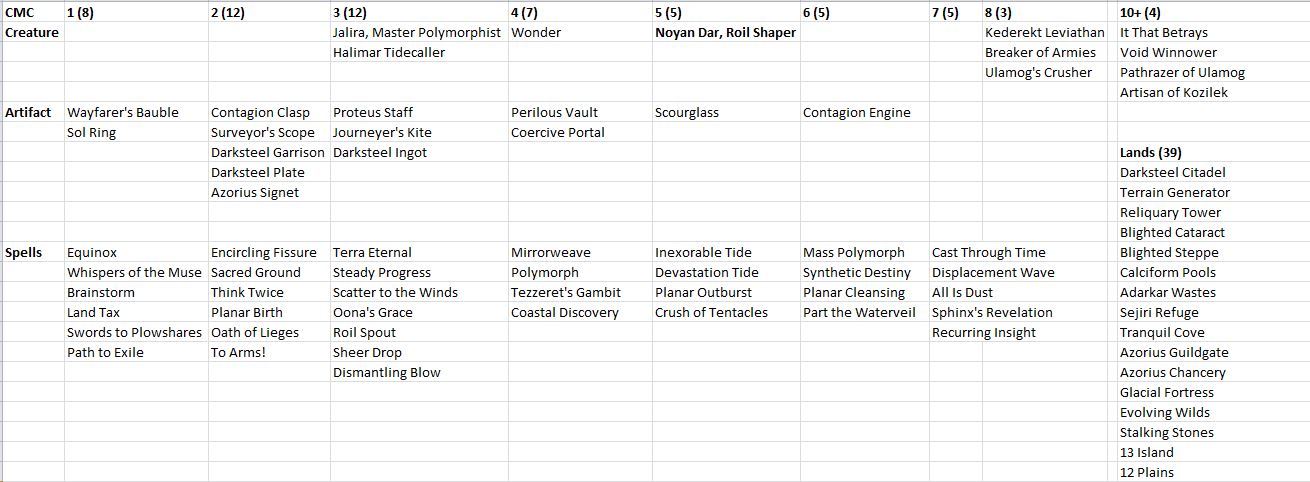
Click for a larger version—and, again, here’s a TappedOut link. One last note on the manabase: I’ve tried to bias toward a budget-friendly list, but you can definitely make upgrades as you see fit. In particular, lands that animate themselves (like [mtg_card]Celestial Colonnade[/mtg_card]) really appreciate Noyan: you can add +1/+1 counters to them, which then stack with the ability that animates them. Stalking Stones should be easy to come by, though.
That’s all for this week! Next week I’ll be back with a preview for Pro Tour Oath of the Gatewatch, and the week after I’ll be back on Commander to cover Oath‘s new legendary creatures. In the meantime, let me know how your experiences with Oath cards have gone, in the comments here or on Twitter (tweet @cutefuzzy_).

